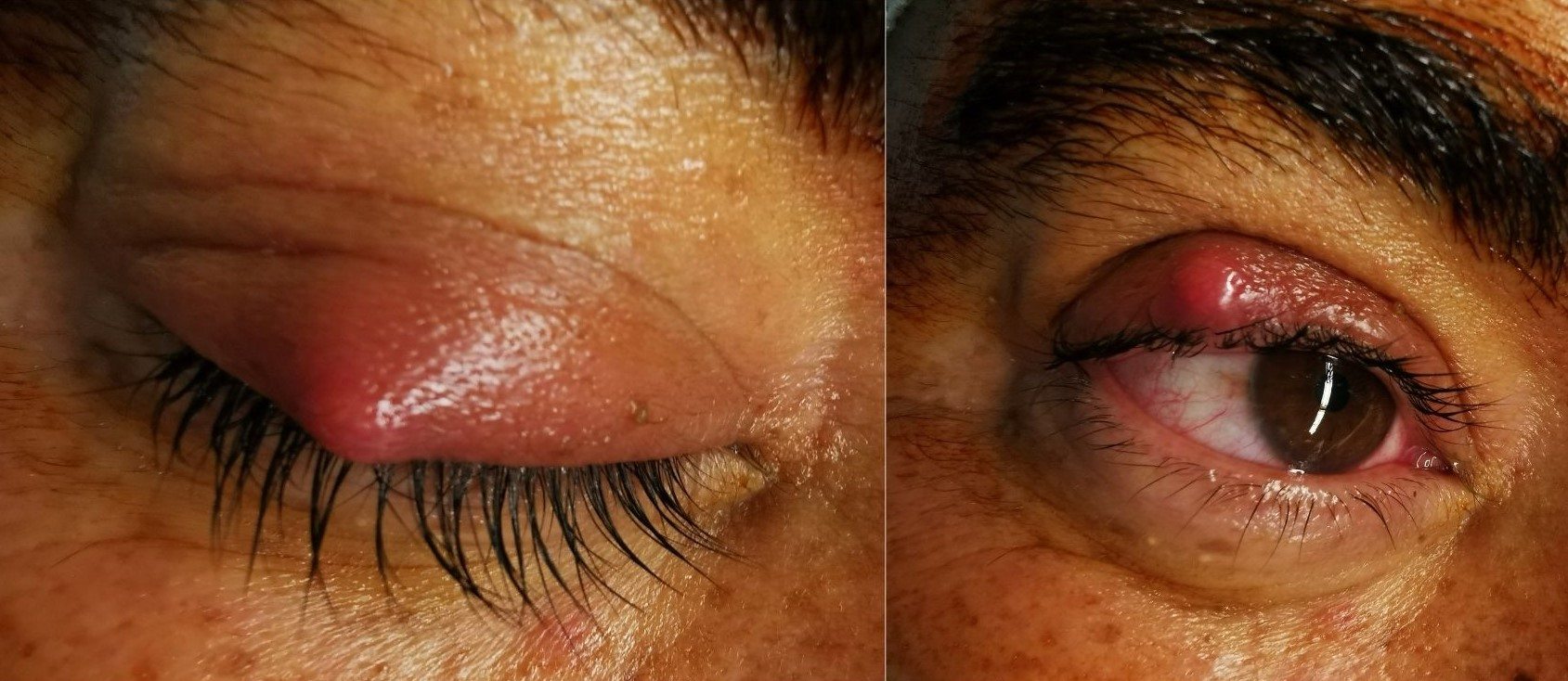
A stye is a small, red, painful lump on the eyelid that may contain pus. It is usually caused by obstruction and inflammation of the Meibomian glands located within the eyelid, but can also be caused by an inflammation of the Zeiss glands (sebaceous glands of the palpebral edge). It can be found both on the inside and outside of the eyelid.
It should not be confused with a chalation, which is a cyst on the eyelid caused by an obstruction of the Meibomian gland. Unlike a stye, a chalation is not painful.
The symptoms produced by a stye are
Sties are usually caused by an infection of the Meibomian glands or the sebaceous glands of the eyelid (Zeiss glands). There are predisposing factors, the main one being a history of blepharitis. Other factors that favor its appearance can be hormonal changes or stress, which can decompensate blepharitis. Local factors related to the hygiene of the periocular region can also contribute, such as touching the eyes with dirty hands, the use of expired cosmetics or not removing eye makeup properly before sleep.
Usually sties disappear on their own without the need for specific treatment, although reappearances are frequent. For the treatment, it is recommended to apply warm water compresses on the eyelid for 5-10 minutes, massaging to help drain the obstructed gland, about 3 or 4 times a day. It is very important not to exert excessive pressure or try to remove the pus from a stye, as this could favour the extension of the infection in the eyelid. It is also recommended not to use contact lenses or makeup while having a stye.
Most sties are harmless, but if they don’t get better after 48 hours or the redness and swelling worsen, it is recommended to consult an ophthalmologist, who can suggest specific treatments for each case.
How do you treat a stye?
At first, it is advisable to carry out the treatment by applying heat and massaging the affected area several times a day. If it does not improve or the inflammation worsens you should go to the ophthalmologist.
What is an internal stye?
It is an acute obstruction and inflammation of a Meibomian gland (located inside the eyelid).
How long can it take for a stye to disappear from the eye?
The time is variable, although most disappear within the first month.
Can a stye be due to stress?
Yes, since stress can worsen blepharitis, the main predisposing cause.
Can a stye be treated with chamomile or other home remedies?
As part of the treatment, hot compresses infused with chamomile can be used for local massage of the affected area.
The use of other home remedies that are not indicated by your ophthalmologist is not recommended.
How to clean the eyes in case of stye?
The hygiene of the palpebral edge and the eyelashes should be carried out with towels or specific soaps for ophthalmic use indicated by your ophthalmologist.
Can I wear make-up if I have a stye?
It is not recommended, it is suggested to avoid products that are applied on the eyelashes and palpebral edge such as mascara or eyeliners, since they favor the obstruction of the Meibomian glands.
Contact us or request an appointment with one of our specialists.